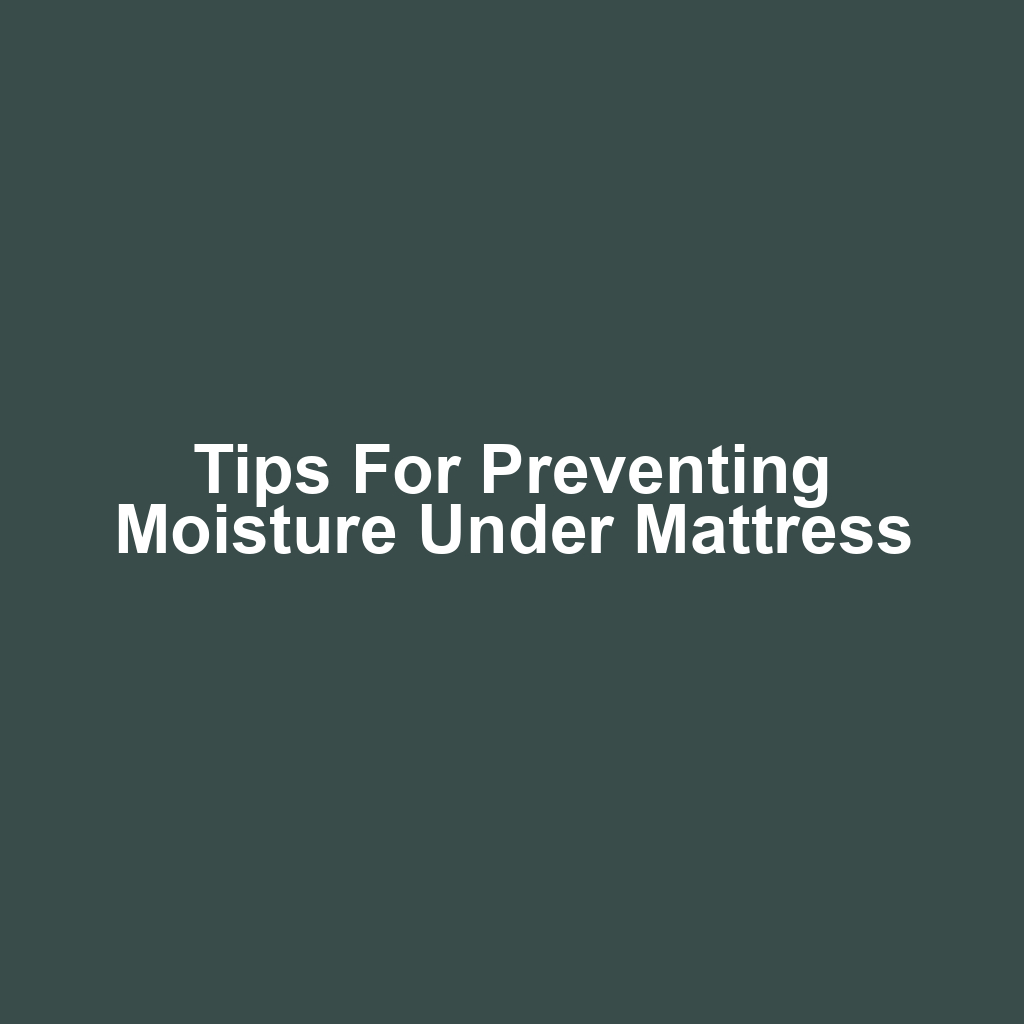I’ve often found myself dealing with the frustrating issue of moisture under my mattress. It’s something that can lead to unpleasant odors and even mold if left unchecked. I’ve learned a few valuable tips that can help prevent moisture under mattress, ensuring a healthier sleeping environment. From choosing the right mattress protector to maintaining optimal bedroom humidity, these strategies have made a noticeable difference. Let me share what I’ve discovered to keep my mattress dry and comfortable!
Choosing the Right Mattress Protector
Choosing the right mattress protector can make a significant difference in keeping moisture at bay. I’ve found that a waterproof option works best for my needs. It helps me sleep soundly without worrying about spills or sweat. I prefer protectors made of breathable materials, so I don’t feel suffocated at night. The fit is also crucial; I always go for deep pocket designs to ensure it stays in place. I’ve learned that some protectors can feel noisy, so I avoid those with crinkly materials. Checking for durability is essential, as I want it to last through multiple washes. I often read reviews to see how others rate their moisture resistance. In the end, a good mattress protector gives me peace of mind while I sleep.
Maintaining Optimal Bedroom Humidity
Maintaining optimal bedroom humidity is essential for keeping my mattress dry and comfortable. I find that a humidity level between 30% and 50% works best for me. When the air’s too humid, I notice my mattress feels damp and unpleasant. I often use a dehumidifier to help regulate moisture levels in my room. Additionally, I keep windows open when weather permits to allow fresh air circulation. I’ve also started using moisture-absorbing products like silica gel packets in my space. On days when it’s particularly humid, I avoid covering my mattress with heavy bedding. I regularly check humidity levels with a hygrometer to stay informed. Now that I’ve tackled humidity, it’s time to focus on implementing proper bed frame design.
Implementing Proper Bed Frame Design
A proper bed frame design really helps in preventing moisture buildup under my mattress. I’ve noticed that slatted frames allow for better air circulation. It’s crucial to choose a frame with adequate spacing between slats. I prefer a design that elevates my mattress a bit off the ground. This keeps it dry and less prone to mold. I also stay away from solid platforms without ventilation. When I’m purchasing a bed frame, I always check for materials that resist moisture. My frame’s construction plays a big role in how well it performs. Overall, I can tell the difference when I invest in a quality bed frame.
Regularly Cleaning Bedding and Mattress
Regular cleaning of my bedding and mattress helps keep moisture at bay. I try to wash my sheets at least once a week. It’s amazing how much dust and sweat can accumulate over time. I also vacuum my mattress every month to remove any debris. When I spill something, I spot clean immediately to prevent stains. I use a mattress protector that’s machine washable, which makes it easier to maintain. After washing my bedding, I always let it dry completely before putting it back. I find that airing out my mattress periodically helps, too. It’s a simple routine that makes a significant difference in my sleep environment.
Monitoring and Controlling Room Temperature
Keeping an eye on the room temperature helps me prevent moisture from building up under the mattress. I usually set my thermostat to a comfortable level, ensuring it’s not too warm or too cold. I’ve noticed that a cooler room feels fresher and makes a big difference in reducing humidity. When it’s particularly humid outside, I run a dehumidifier to keep the moisture at bay. I also try to avoid placing my mattress directly on the floor, as that traps heat and moisture. Instead, I use a slatted bed frame to promote airflow underneath. I check the weather frequently to adjust the heating or cooling accordingly. If I sense a rise in humidity, I immediately take action to lower it. By staying on top of the room temperature, I’ve managed to keep my sleeping environment comfortable and dry.
Frequently Asked Questions
What are the signs that moisture is accumulating under my mattress?
I’ve noticed some signs that moisture might be accumulating under my mattress, like a musty smell or a feeling of dampness when I touch the surface. Additionally, if I see any discoloration on the mattress or notice increased allergies, it could be a sign of moisture buildup.
How often should i replace my mattress protector to ensure effectiveness?
I usually replace my mattress protector every 3 to 6 months to keep it effective. It helps me maintain a clean sleeping environment and ensures that any potential moisture issues are addressed promptly.
Can certain types of mattresses contribute to moisture buildup?
Yes, certain types of mattresses can definitely contribute to moisture buildup, especially those made from materials that don’t allow for proper airflow. I’ve noticed that memory foam mattresses tend to retain heat and moisture more than others, which can create a damp environment.
If you’re looking to manage your online subscriptions more effectively, I highly recommend visiting this helpful guide on how to remove payment information from Shopify Loop Subscriptions. It offers straightforward steps to ensure your account stays secure and manageable. Check it out here: Info.
